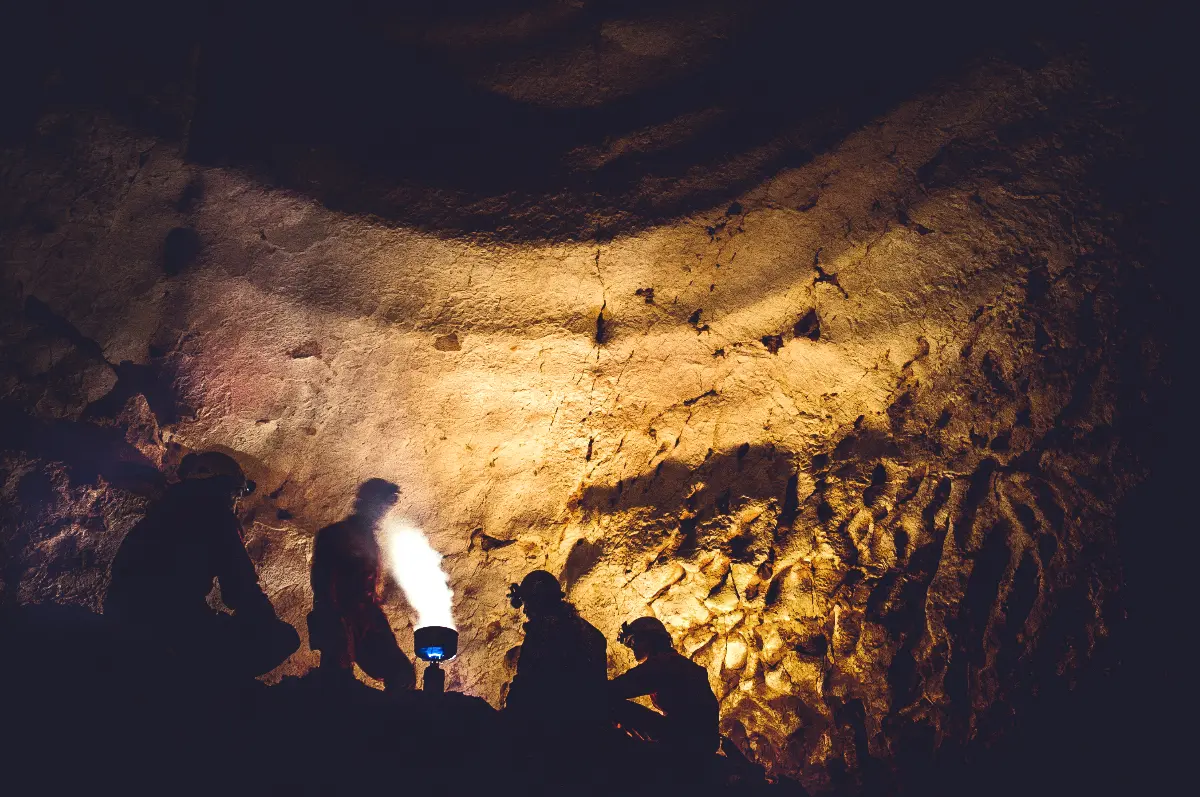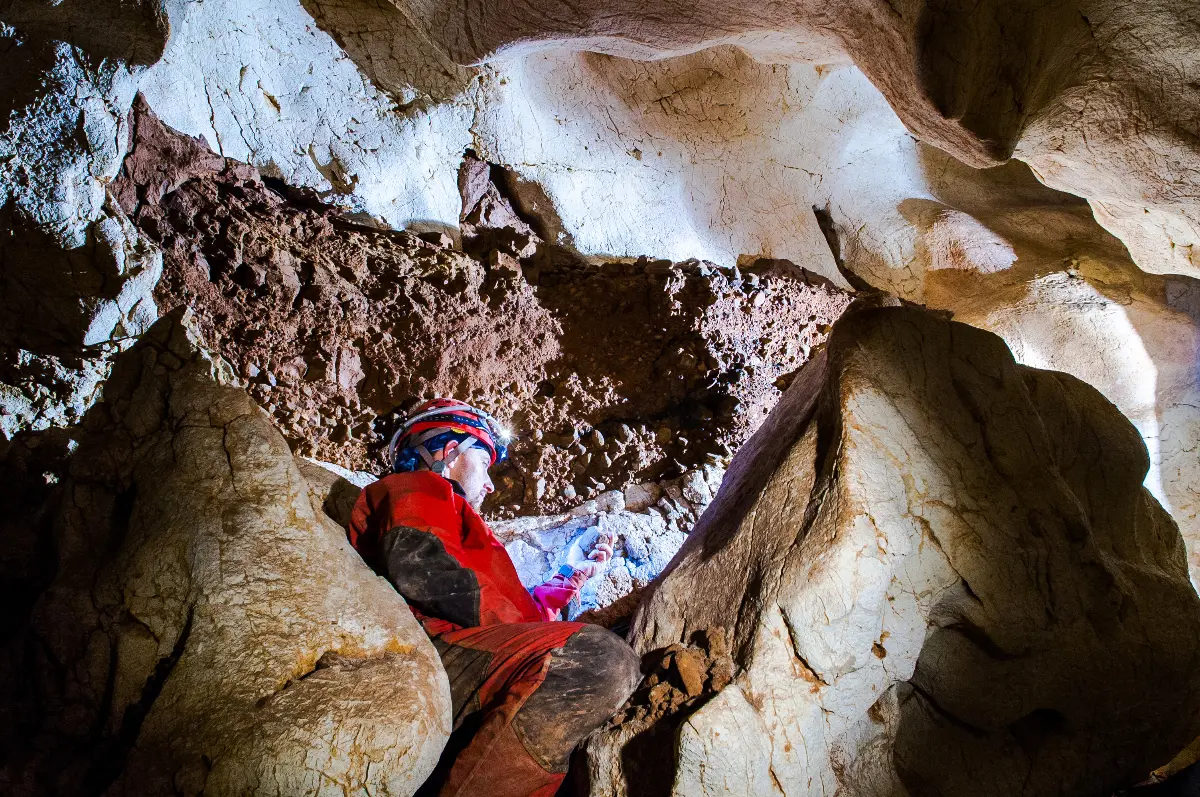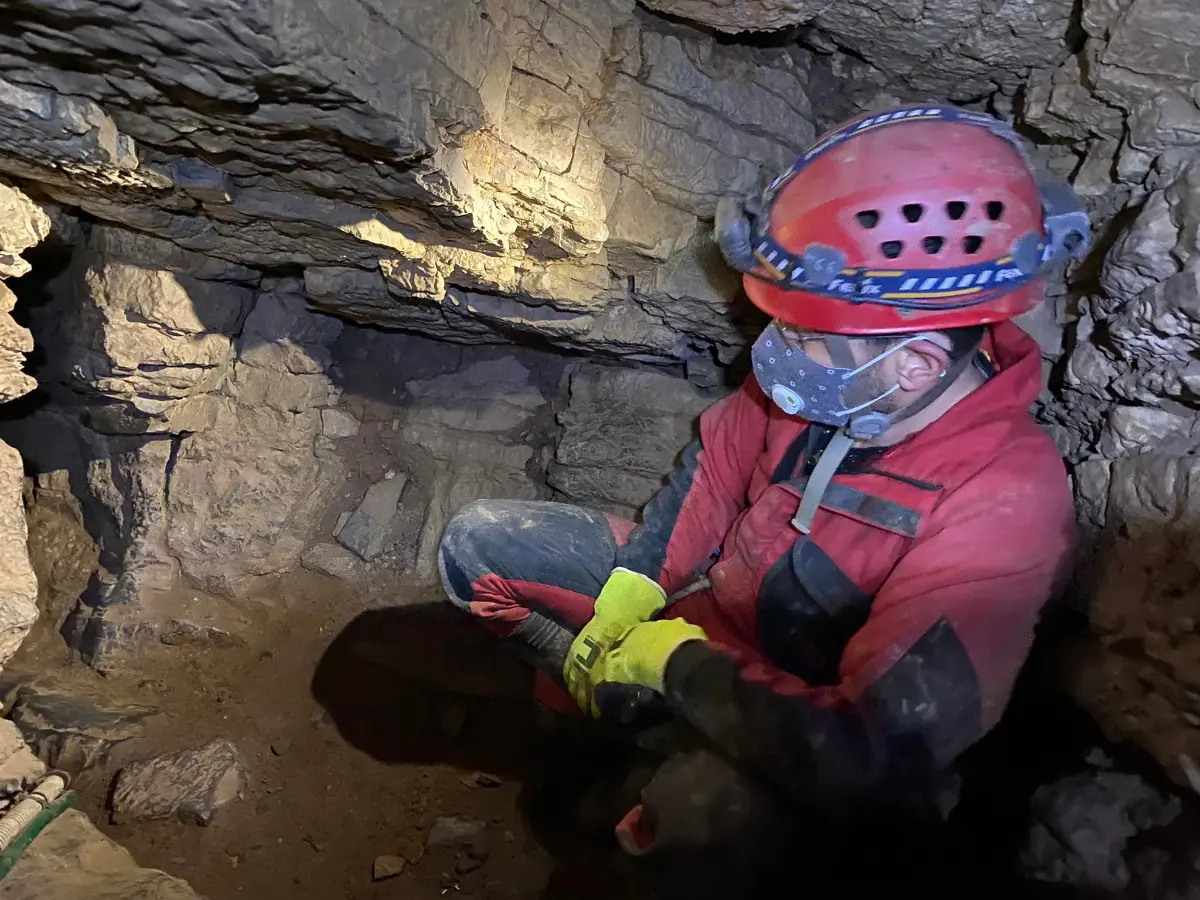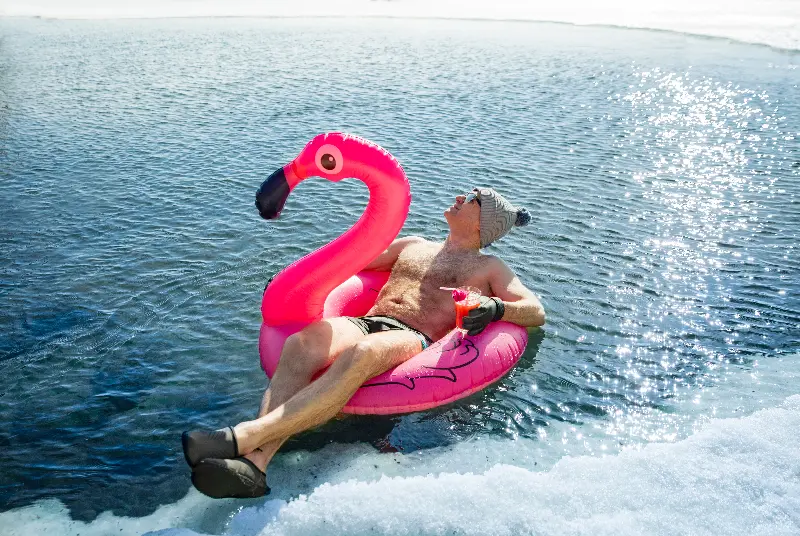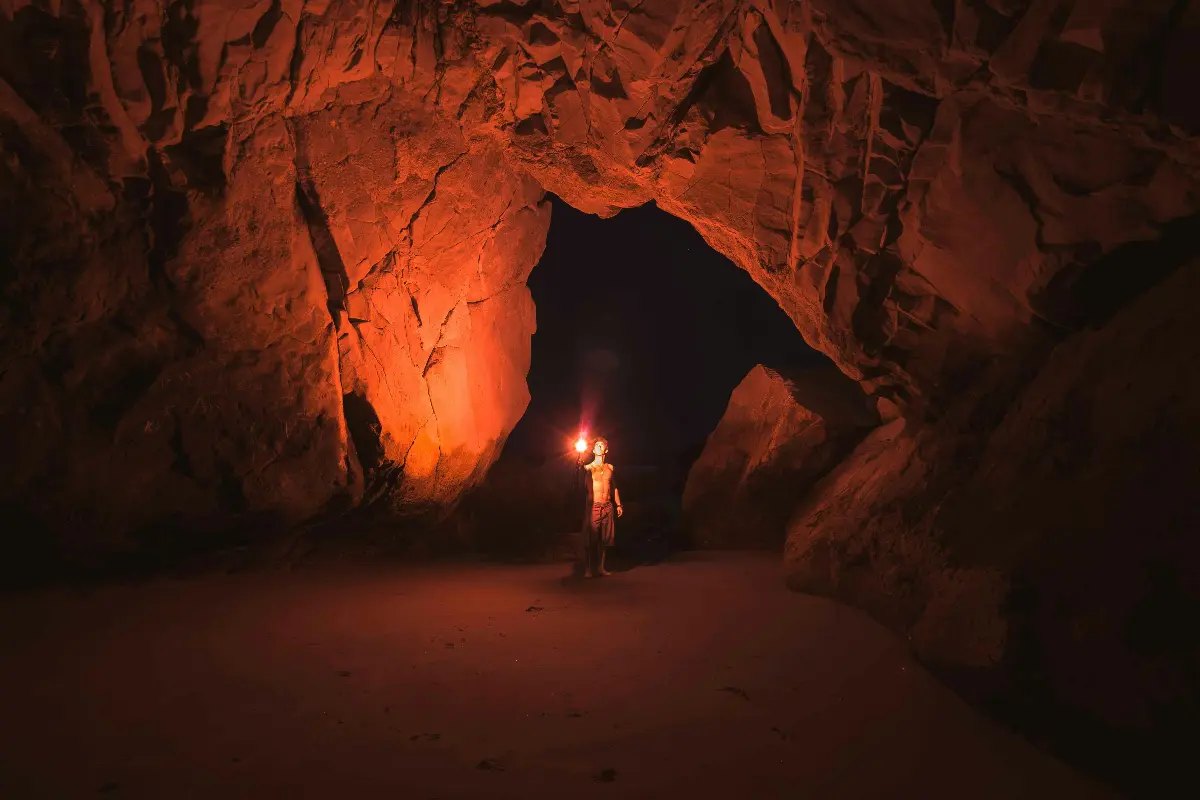
Helyszín címkék:
We crawled and climbed in scary depths, mud and darkness, and we actually enjoyed it
Szabó Sára
It is insane to consider how many intact tunnel systems are under our feet, where humans will probably never reach. The silent and dark giants of Mother Nature rest peacefully beneath the Earth's surface, their shape slowly forming over decades, centuries. Hungary can be proud on its really special geological formations, especially caves. The Hungarian stars are mainly cave systems formed in calcareous tufa, but there are also stream, spring and sinkhole caves. We visited a similar one to the latter. “The caves in the Mecsek are generally not as long as the thermal water caves in the Buda Hills, for example. The Mecsek caves are sinkholes, the longest of which are "only" 200-300 metres long. So far, we have discovered or proven the existence of more than 300 caves, but there could be many more underground,” says Keve Tihanyi, tour guide of the “Mecsek Háza Egyesület” (Mecsek House Association).
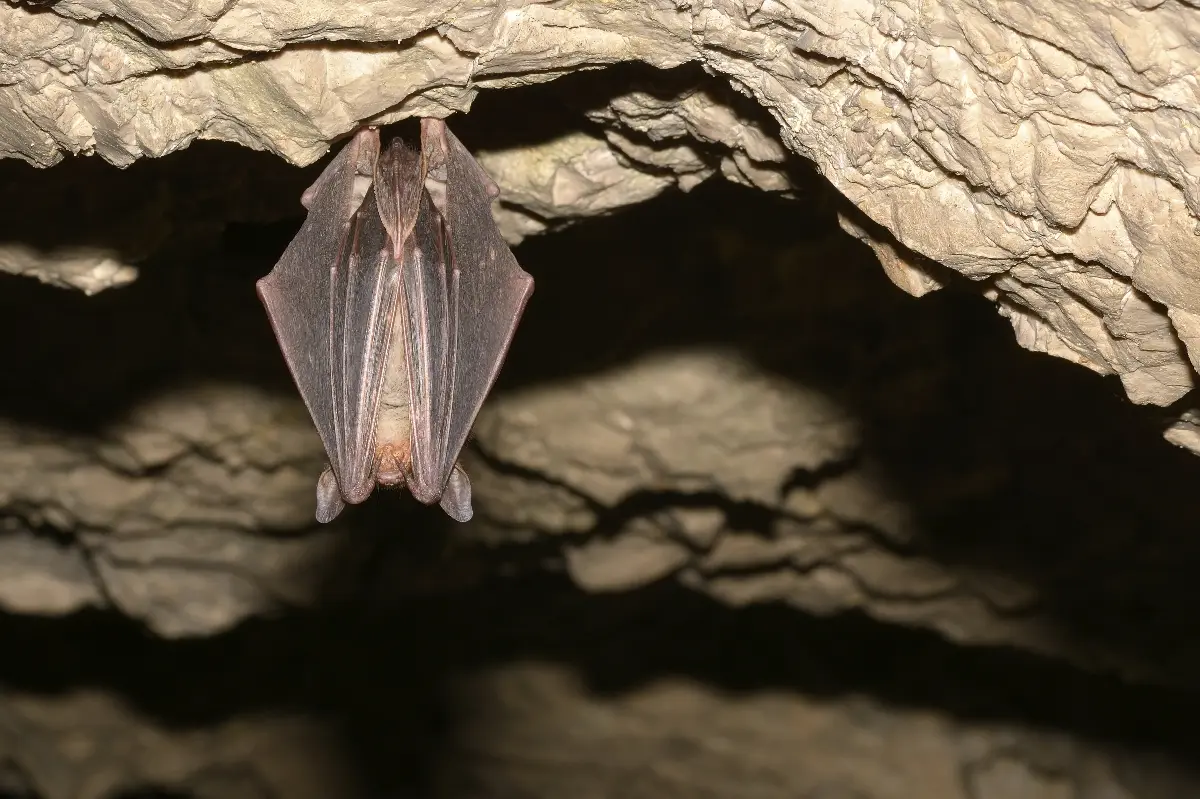
He adds that the “Trió”, “Szuadó” and “Mészégető” caves in the Orfű area are also important for tourism. These are not built caves, so a visit is recommended for those who are curious about the underground world beyond the concrete passageways. You need a helmet, overalls, boots and a headlamp, but you do not have to be a spelunker to complete the tour. The three caves are characterised by the fact that they usually start with a narrow passage, with the larger cavities starting 15-20 metres deep, making them an adventurous challenge for anyone. The easiest of the three caves in Mecsek is the “Trió” cave, where anyone from primary school children to retired adventurers are guided. Keve Tihanyi tells us that their oldest caver so far was an 82-year-old man, but they have also taken down a three-year-old baby. Although the first stage involves a lot of crawling on your belly or in mud, do not be frightened: the visit is not physically demanding and requires no special preparation. “There is one person in every two or three groups, who realises they have claustrophobia just in front of the cave entrance. I usually say that if you are a little bit afraid of a narrow entrance, you must have a “fakeostrophobia”. Of course, if the hiker is already showing physical symptoms of anxiety, we do not force them to visit the cave, but rather sit them down at the cave entrance while we are hiking,” says the guide. Of course, we were also scared to death, when we saw the entrance in the ground, which at first glance looked like a palm-sized hole in the ground. But after overcoming the initial adrenaline rush, the adventurer soon realises that it would be a shame to leave this life without such experiences.
Narrow places to crawl, dormant bats inches from your head, horns that are too high to even look down: a cave tour of a lifetime.

The passages lined with mines also presents some wonderful geological gems and formations. The “stalactite flag” hanging in the “Búbos-kemence” (Beehive Oven), for example, is one of the largest stalactite formations in the Mecsek. According to Keve Tihanyi, cave exploration in Mecsek has produced remarkable results, but there are still many unexplored caves. Their main goal is to get into the cave system that has already been proven to exist using the so-called water painting method. There are three caves in the valley that connect underground, with passages that reach down to the “Vízfő-forrás” (Water Spring) at the “Mecsek Ház” (Mecsek House). According to water yield measurements, he says, there is a 5-6-kilometre-long system of cave tunnels underground that has yet to be explored. You might be even the one, who explores one of them.
